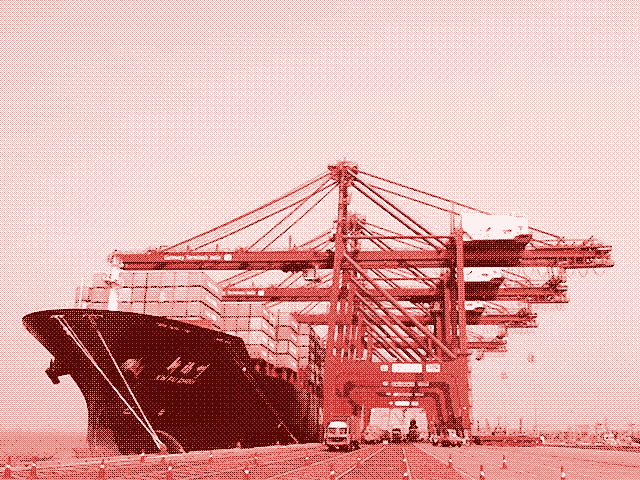
China and India are devouring our energy resources at an ever faster pace. The greenhouse gases that are saved in western countries by installing wind turbines and solar panels are abundantly compensated for by the building of new coal plants in these countries. However, we don’t have clean hands.
The latest energy report of the International Energy Agency (IEA) was dedicated largely to the growing energy needs of India and China. Both countries will consume half of the extra energy needed in 2030. An important explanation for their energy hunger is mentioned somewhere halfway the report, almost casually summarized in a little box. According to the calculations of the IEA, in 2004 more than 28 percent of energy consumption in China was the consequence of the production of export goods.
Three years before, in 2001, this number amounted to ‘only’ 18 percent. If we compare this to the US, this percentage in 2001 was 6 percent, in Europe 7 percent. China is – increasingly – the factory hall of the west. The IEA did not make the same calculations for India (and other low-wage countries), but a similar evolution is taking place there.
Cheap electronics
In the last 10 years, Europeans and Americans have moved their factories one by one to Asia, because the manufacturing of consumer goods is cheaper there due to lower cost of labour and the absence of environmental laws. That’s why we can buy dirt cheap electronics and clothing, while we can at the same time boast that we are more or less in control of our energy consumption and environmental problems (at least in Europe, where in the past year several countries emitted less CO2 than the year before).
The laptop on which this article was written, the clothes of the author, the lamp that illuminates this desk, the printer, the telephone, the carpet, the slippers: all these things were manufactured in China and environs, even though they carry a western brand name. 1
Conservative estimation
China also imports goods, corresponding to 12 percent of their energy use. From that, the IEA concludes that a net 16 percent of the energy use in China originates from the manufacture of western goods. However, because these factories mainly use energy coming from the most polluting coal plants, the production of export goods equates to 34 percent of all CO2 emissions in China, writes the IEA. Furthermore, this is a very conservative estimation because a great deal of the import goods entering China, arrive from other (neighbouring) low-wage countries, and not from the west.
Virtual energy import
Since last year, the Chinese are the largest producers of greenhouse gases in the world, but it’s clear that it’s inappropriate to point the finger at them. If we were to produce all of our rubbish ourselves, our energy use and CO2 emissions would be a lot higher. Western countries import massive amounts of ‘virtual energy’, just like they import massive amounts of ‘virtual water’. On the other hand, we export waste and environmental pollution. At least, that’s the equilibrium now.
By moving our production processes to China and India, we make the Chinese a little bit richer every day. By 2030, the Chinese economy will increasingly be aimed at the domestic market, the IEA predicts. It seems impossible that China and India one day will reach the same standard of living as we do, since that implies that the other half of the planet will be used as a trashcan and sweatshop. However, it might not always be the same half of the planet.